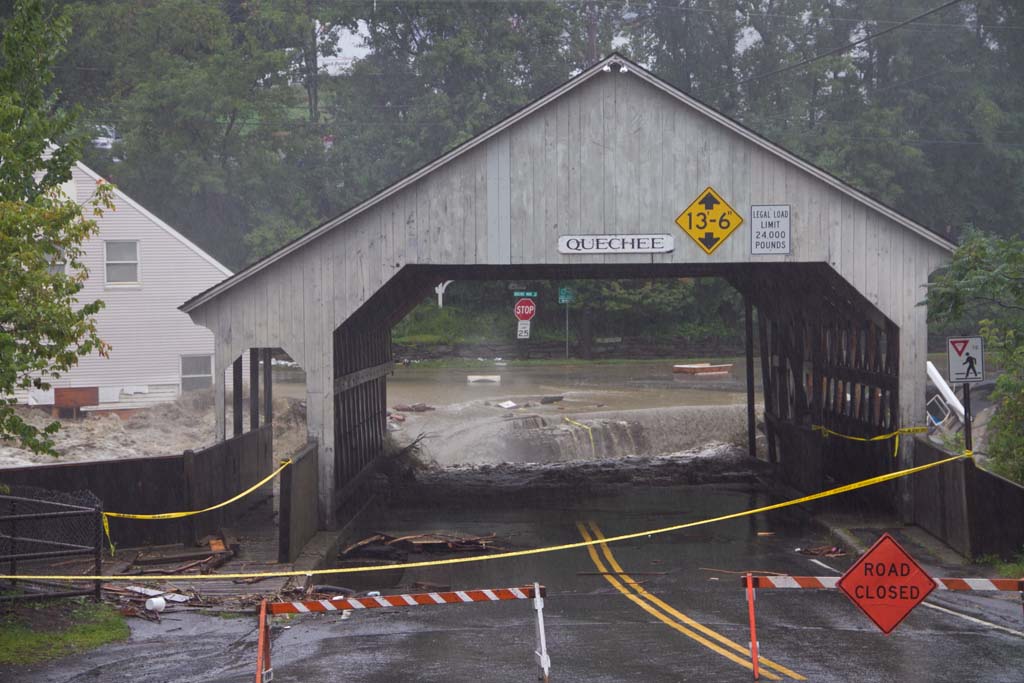Sixteen year to the day after Hurricane Katrina made landfall, the Gulf Coast was recently hit by another devastating storm, Hurricane Ida. Below is our original post reflecting back on Tropical Storm Irene’s impact on Vermont ten years ago as of August 28th. With the Southern U.S. just beginning to emerge from Ida, here are a few organizations offering support to the recovery effort:
—Original Post—
Today marks ten years since Tropical Storm Irene unleashed 11 inches of rainfall on Vermont, causing over $700 million in property damage, washing out roads, bridges, homes, and farmland, and taking seven lives. Vermonters came together in the days and weeks following Irene to rebuild and start the recovery. Ten years on, we are reminded of the ongoing need to work together to adapt to a rapidly changing climate.
Despite Irene’s description as a “once in a century” storm—indeed the worst since the Great Flood of 1927—we are now witnessing unprecedented weather impacts on a continual basis, undoubtedly due to climate change.
This year is the seventh consecutive year with a named tropical storm in May, before the official start of Hurricane Season on June 1. Just recently, much of Vermont braced for Tropical Storm Henri, which thankfully spared us any major impacts.
At the same time as storms are intensifying, Vermont has experienced prolonged drought conditions this summer. And anyone who has looked up at the hazy orange-tinged moon in recent weeks has witnessed the lingering smoke from wildfires in the Western U.S., a visceral reminder that Vermont isn’t isolated from even the distant impacts of climate change.
VNRC is committed to the urgent, necessary work needed to brace for the increasing impacts of the climate crisis. We have made considerable progress over the last ten years. Vermont’s greenhouse gas emissions have been declining since 2016, and in 2018 (the last year for which data is currently available), our emissions were equal to 1990 levels. To ensure we continue this positive trend, in 2020, Vermont passed the Global Warming Solutions Act, which requires us to turn our voluntary climate commitments into binding targets. VNRC holds a seat on the Vermont Climate Council to see this work through.
An important aspect of the Council’s work is to ensure that whatever strategies Vermont adopts to reduce our emissions are developed with the active engagement of marginalized and BIPOC communities, who often bear the brunt of climate-related impacts. The Council’s approach aims to ensure that the benefits of proactively addressing the climate crisis are broadly shared. A draft report is anticipated in December.
We also have an opportunity to secure unprecedented funding from the federal government that tackles climate change in a way that creates jobs, invests in clean energy and ensures the benefits of the investment are shared equitably. Check out our recent webinar, where we were joined by Senator Sanders and town energy leaders to discuss these once-in-a-generation investments! And if you haven’t done so yet, please take a moment to thank our congressional delegation for their leadership on climate, and tell congress how urgently we need a bold investment in climate solutions.
The recent report from the Intergovernmental Panel on Climate Change (IPCC) lays out in stark terms that this is the decade we must act to give ourselves a fighting chance to avoid the very worst climate impacts of a warming world.
This fight will take all of us, and we are more committed than ever to the necessary work ahead to ensure a resilient future for Vermont.
Image credit: Wikimedia Commons





